OMA sets the scene for a collaborative performance at Faena Forum
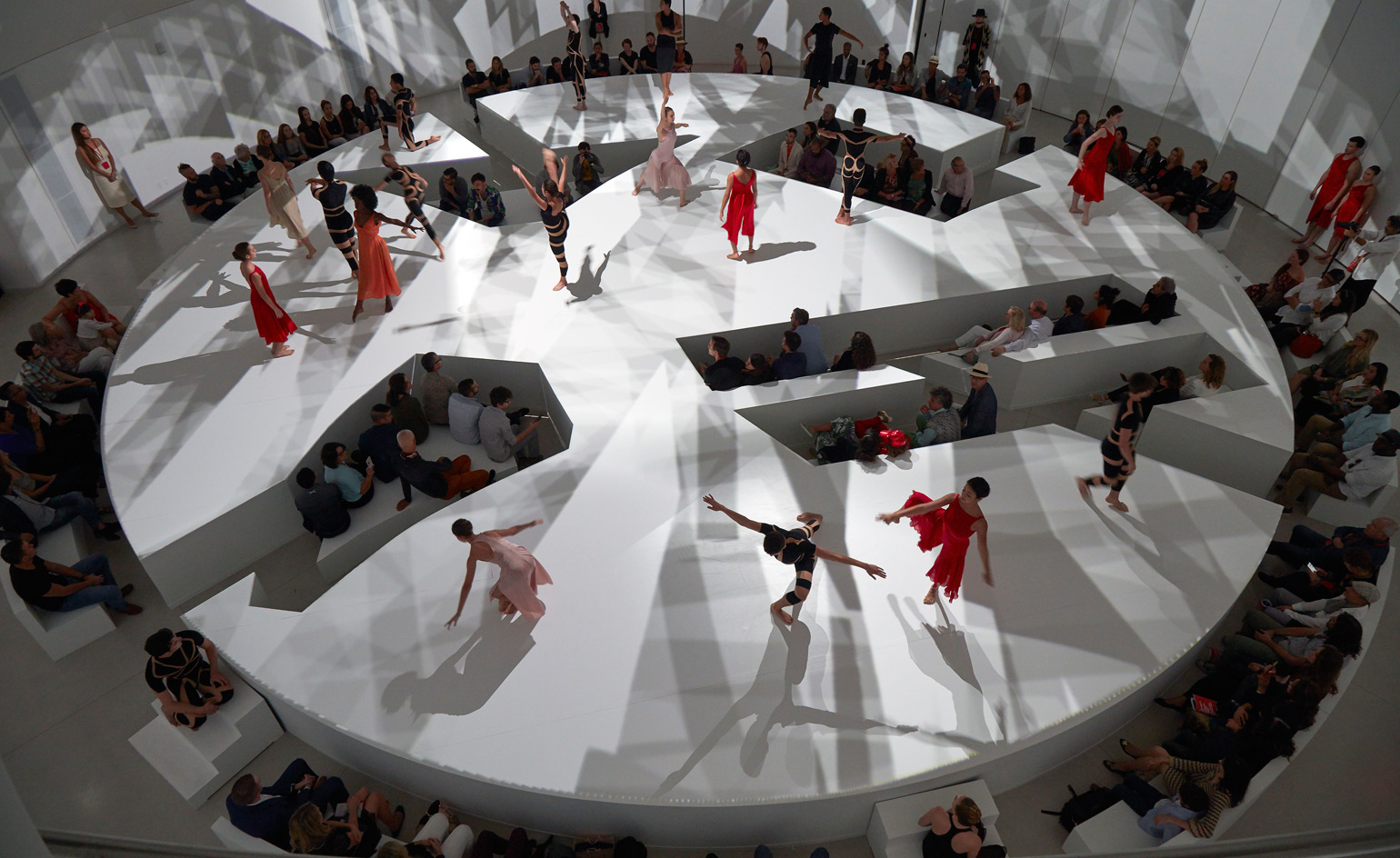
Alan Faena and Ximena Caminos, the partners in business (and in life) behind the mammoth Faena Arts District, wanted to kick off Design Miami and Art Basel Miami Beach with a bang. The result: Once With Me, Once Without Me, a collaborative performance that took place this week involving choreographer Pam Tanowitz, dancers from the Miami City Ballet School, music by Dan Siegler, costumes by fashion designer Sybilla, lighting by Davison Scandrett, and scenography by the building’s architect, Shohei Shigematsu of OMA.

'Once With Me, Once Without Me' inside the OMA-designed Faena Forum.
To highlight the cultural space and multipurpose venue, which features a round room topped with an asymmetrical gridded dome, Shigematsu — who has also designed scenography for artist Taryn Simon and exhibition design for 'Manus X Machina' at the Met — conceptualised a white round stage with segments cut throughout in order to seat guests and create a sense of interaction with the movements of the modern ballet. ‘The scenography is basically recognising the feature of architecture to a full extent,’ explained Shigematsu.
The building’s extensive fenestration played a starring role within the performance, with Scandrett creating a lighting arrangement that used the angular openings to create a backdrop. ‘It’s a kind of virtual shadow and light that is a fast forward within a space, so it’s almost like making time and space almost projected in the actual architectural space, and actually recognising the feature of the space, and then the choreography happens with that,’ said Shigematsu.
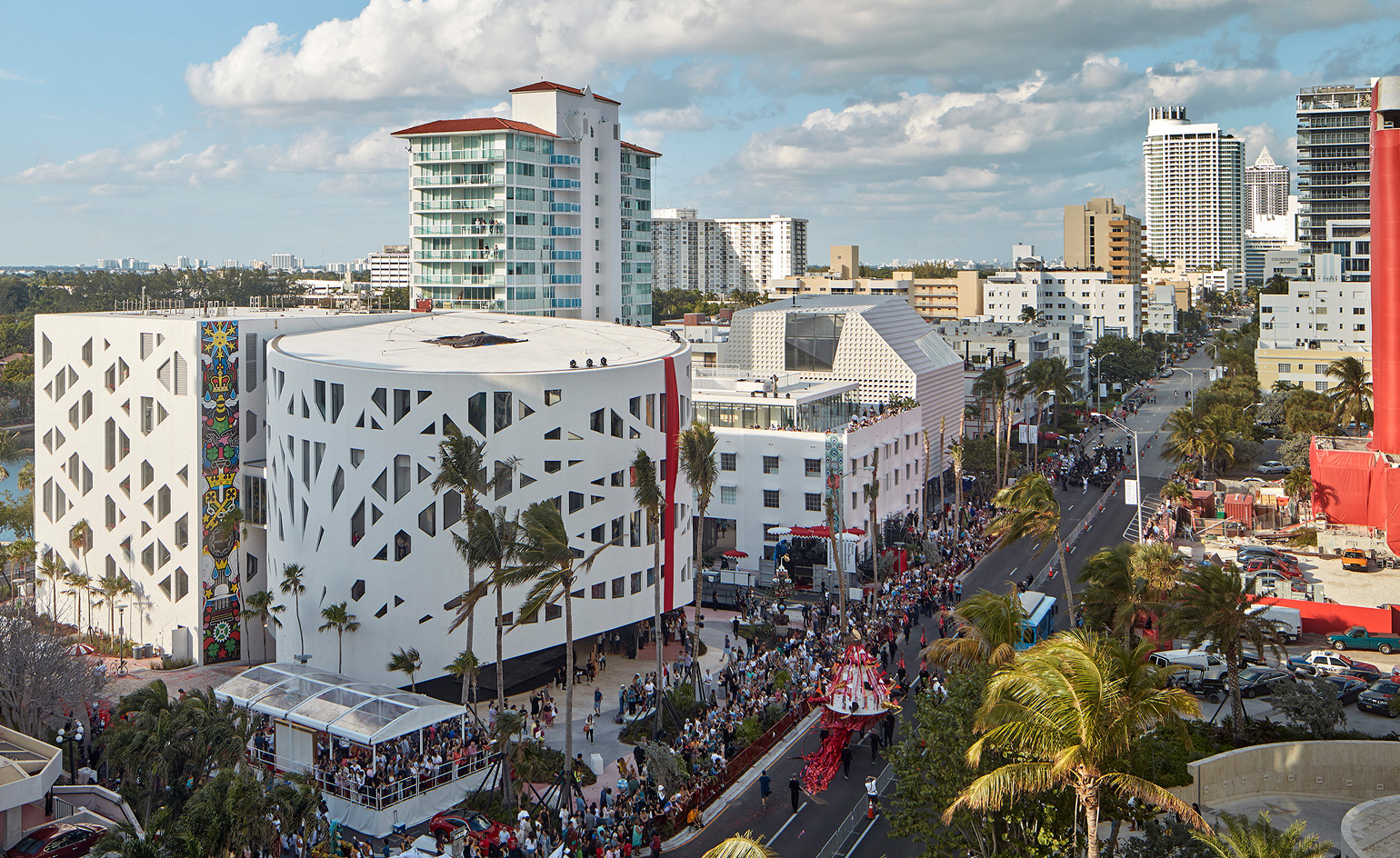
Faena Forum (left) is the jewel in the district's crown.
Towards the end of the performance, which took two years of planning, came the big reveal — the movable wall that divides the space opened, and the dancers flooded through, followed by the audience, and guests could see the venue in its entirety.
‘We wanted to make the piece very specific to the building design, and also specific to this location, and the movement of the sound,’ said Shigematsu.

The building's architect Shohei Shigematsu designed the scenography for the show.
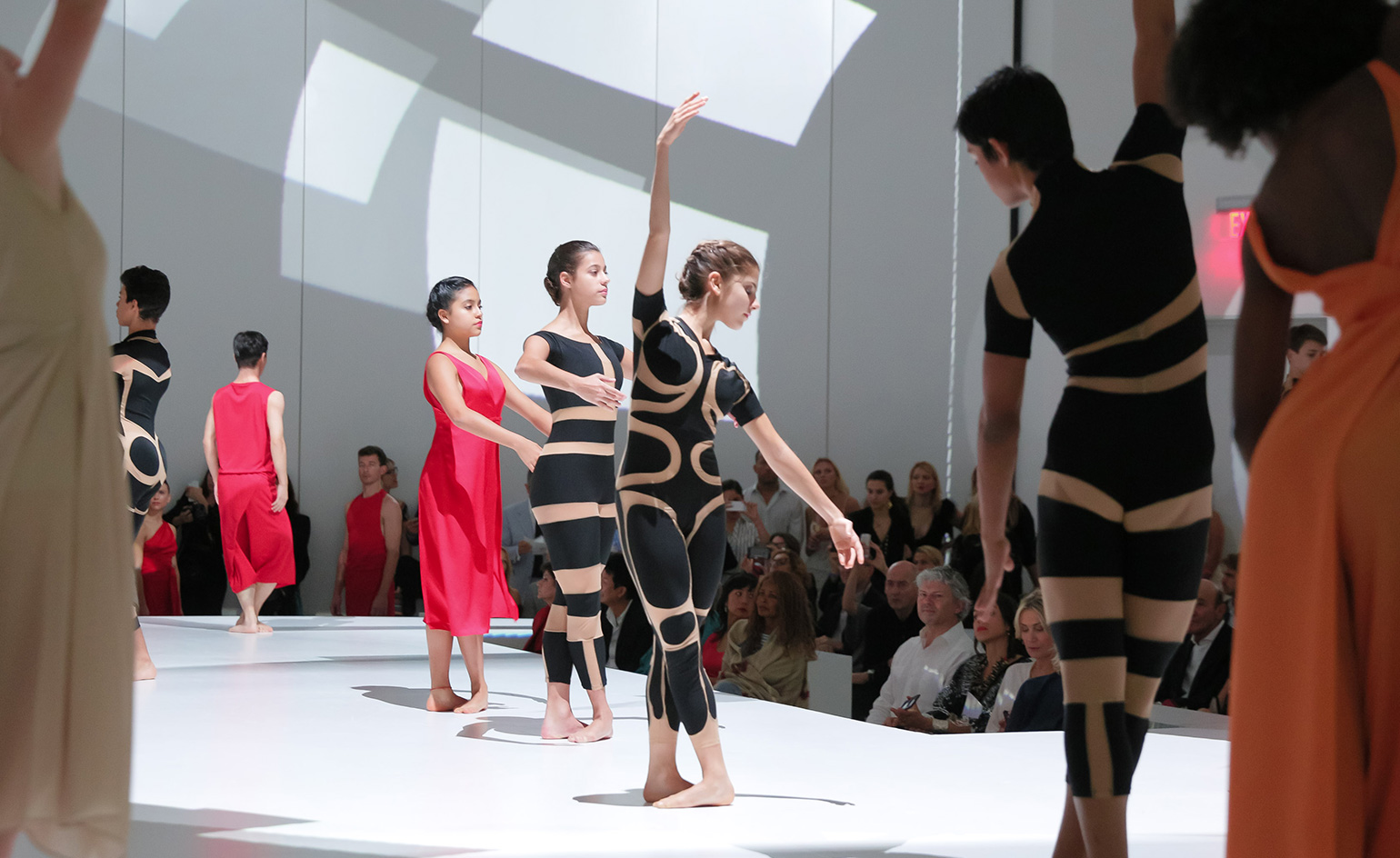
Davison Scandrett riffed on the building's unique fenestration for the performance's lighting arrangement...
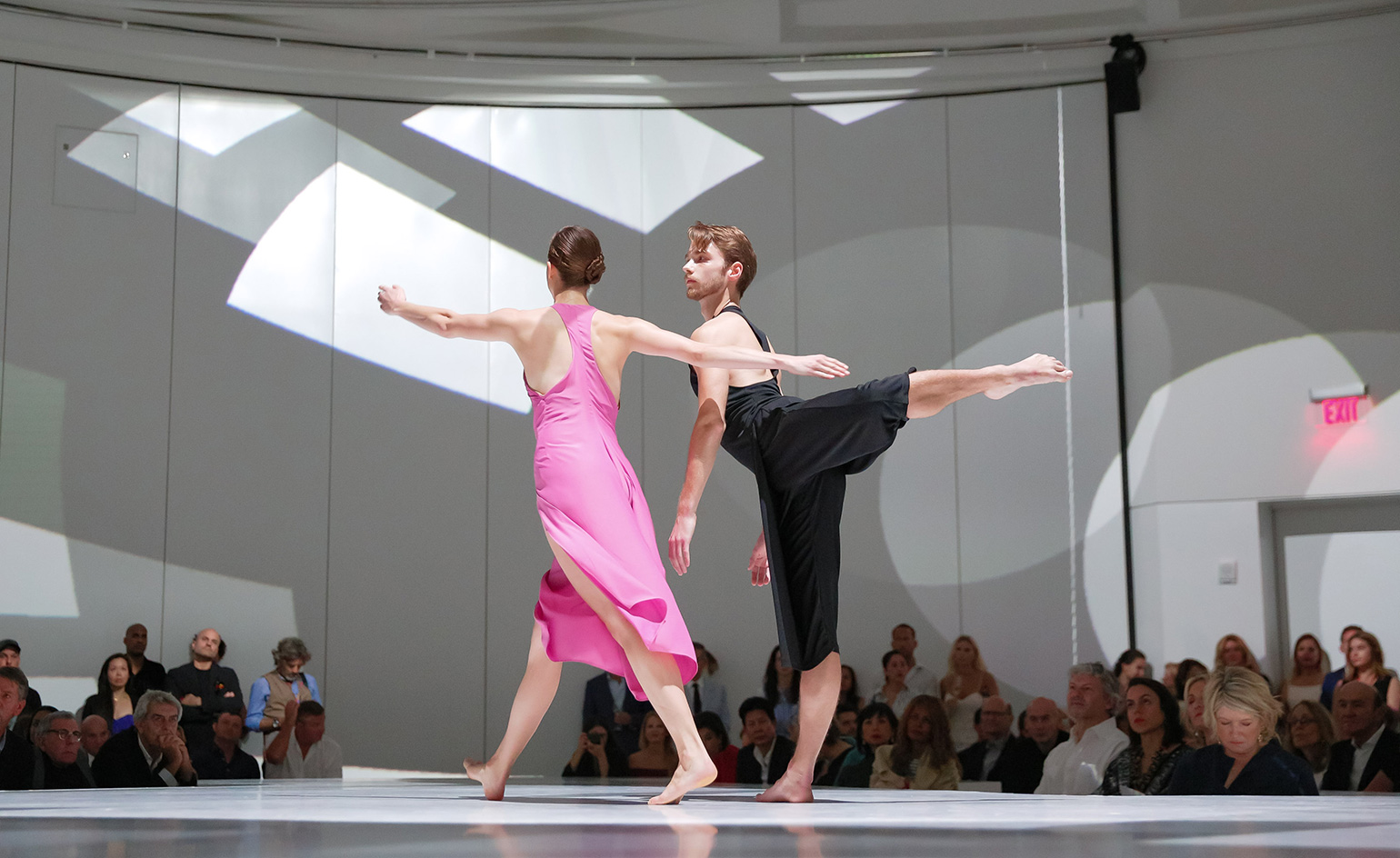
..while fashion designer Sybilla brought her Spanish flair to the costumes.

Shigematsu conceptualised a white round stage with segments cut throughout in order to seat guests.
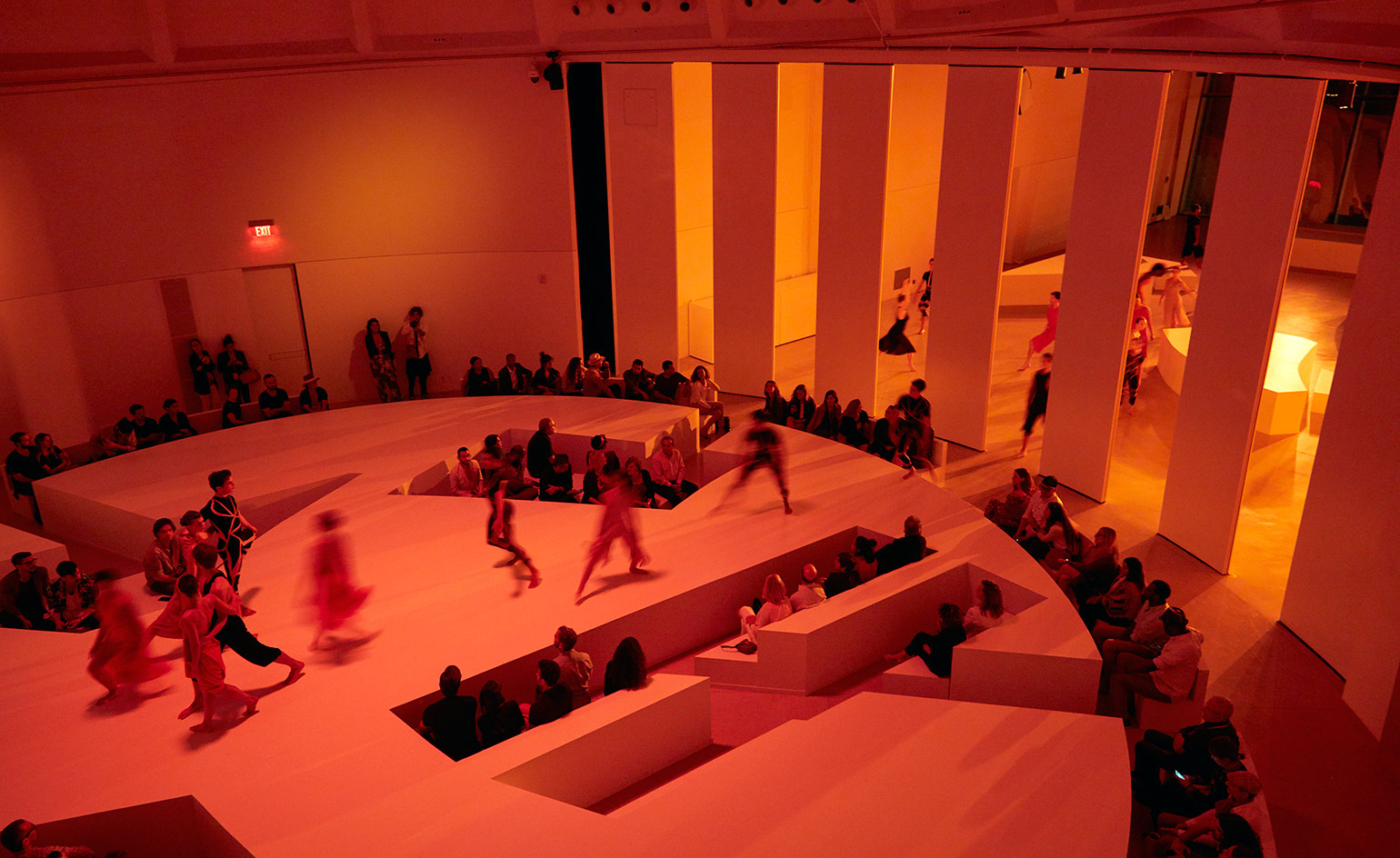
As the show reached its climax, the movable wall that divides the space opened, allowing guests to see the venue in its entirety.
INFORMATION
For more information, visit the Faena website and the OMA website
Receive our daily digest of inspiration, escapism and design stories from around the world direct to your inbox.
Ann Binlot is a Brooklyn-based freelance writer who covers art, fashion, design, architecture, food, and travel for publications like Wallpaper*, the Wall Street Journal, and Monocle. She is also editor-at-large at Document Journal and Family Style magazines.
-
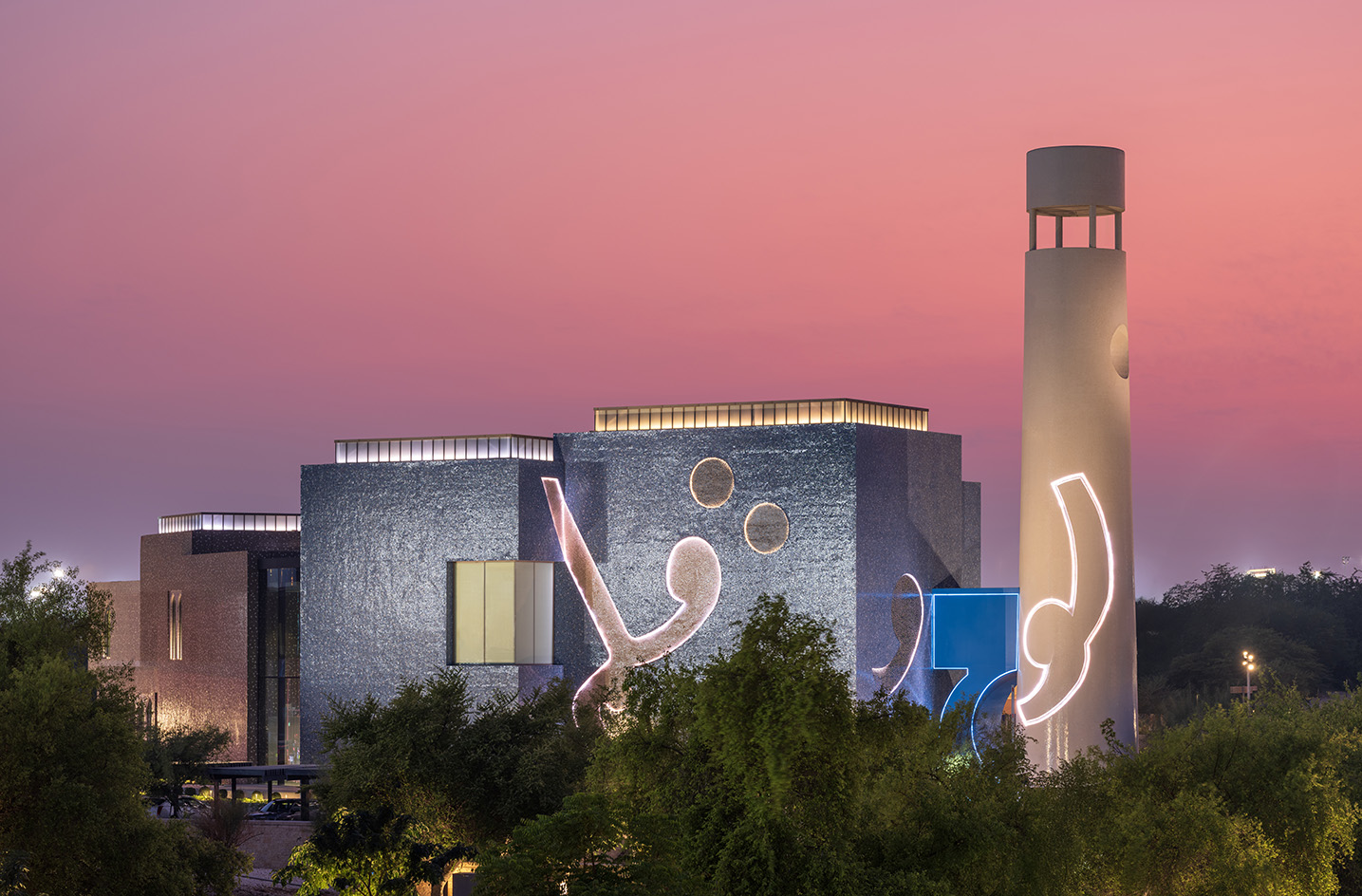 A new art museum brings colour, quirk and a celebration of creativity to Doha
A new art museum brings colour, quirk and a celebration of creativity to DohaLawh Wa Qalam: M. F. Husain Museum is awash with colour and character, courtesy of Indian architect Martand Khosla and the Qatar Foundation
-
 Out of office: The Wallpaper* editors’ picks of the week
Out of office: The Wallpaper* editors’ picks of the weekThis week, the Wallpaper* team had its finger on the pulse of architecture, interiors and fashion – while also scooping the latest on the Radiohead reunion and London’s buzziest pizza
-
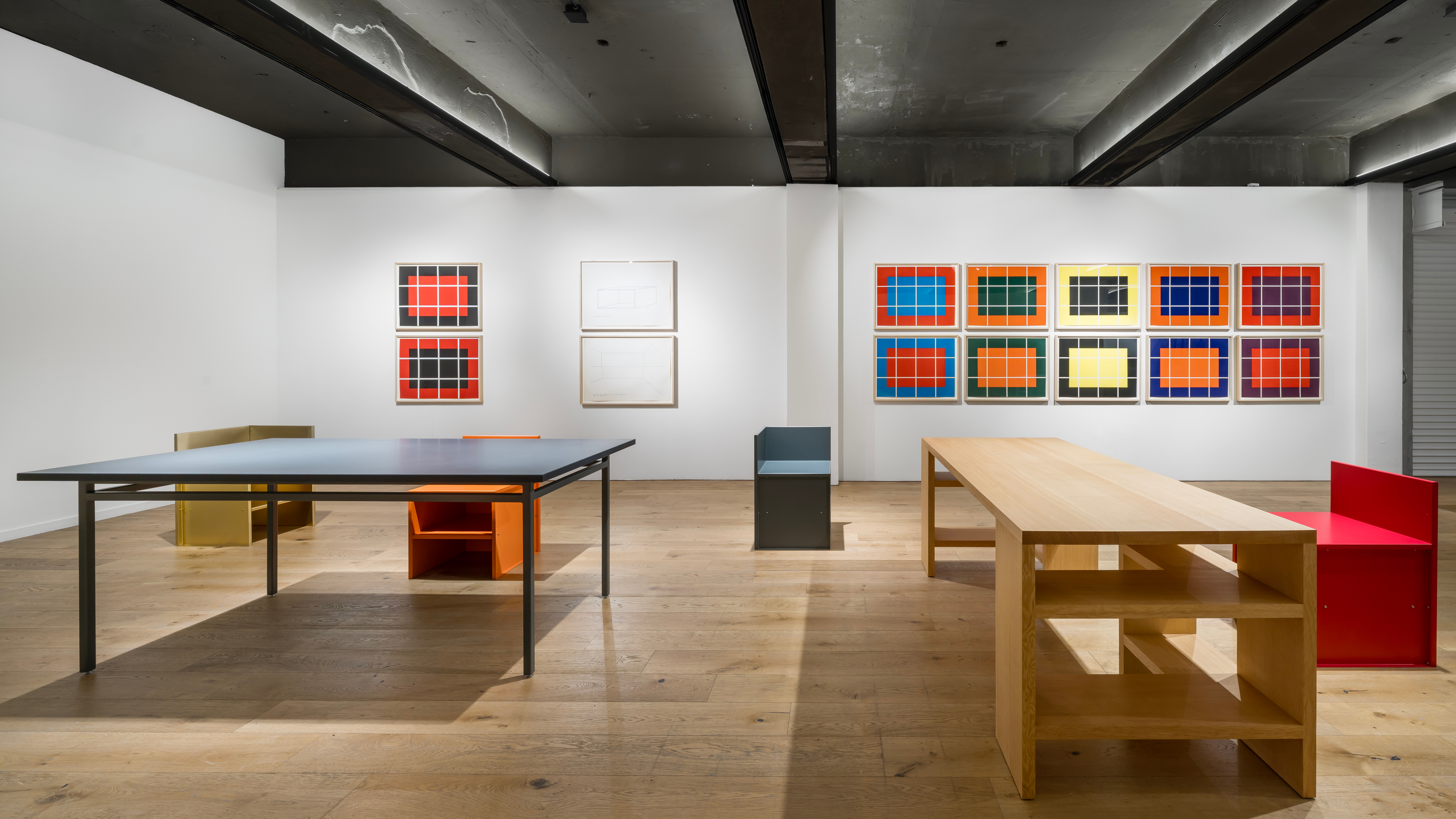 Donald Judd's furniture arrives in South Korea for the first time
Donald Judd's furniture arrives in South Korea for the first timeAt Hyundai Card Storage, a new exhibition curated by Flavin Judd brings together thirty-eight furniture designs by the artist, revealing how his thinking on proportion, materials and use shaped everyday space
-
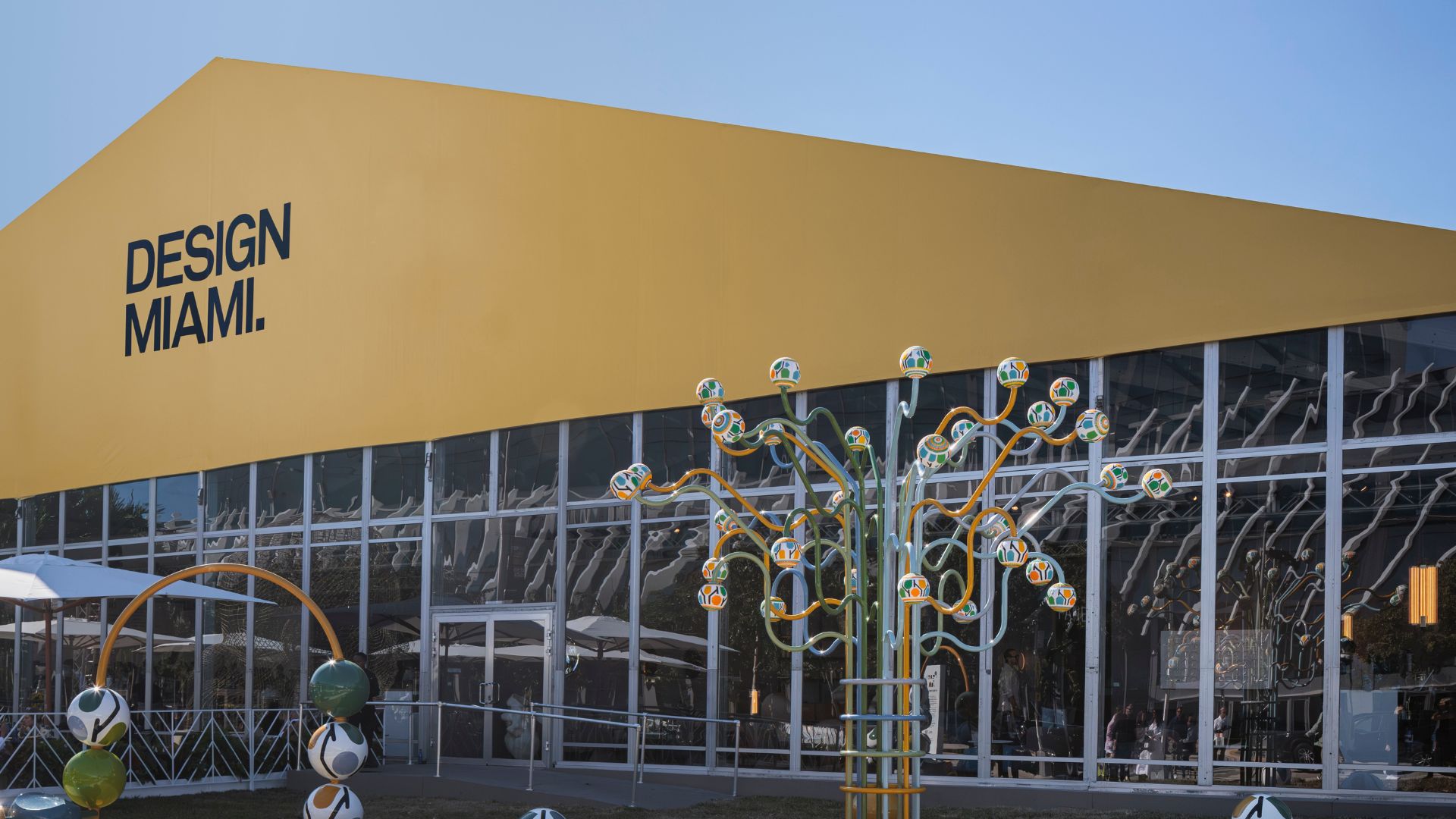 Everything you need to know about Design Miami 2025
Everything you need to know about Design Miami 2025The collectible design fair returns to Miami Beach in December for its 21st edition, alongside a vast array of art and cultural events across the city
-
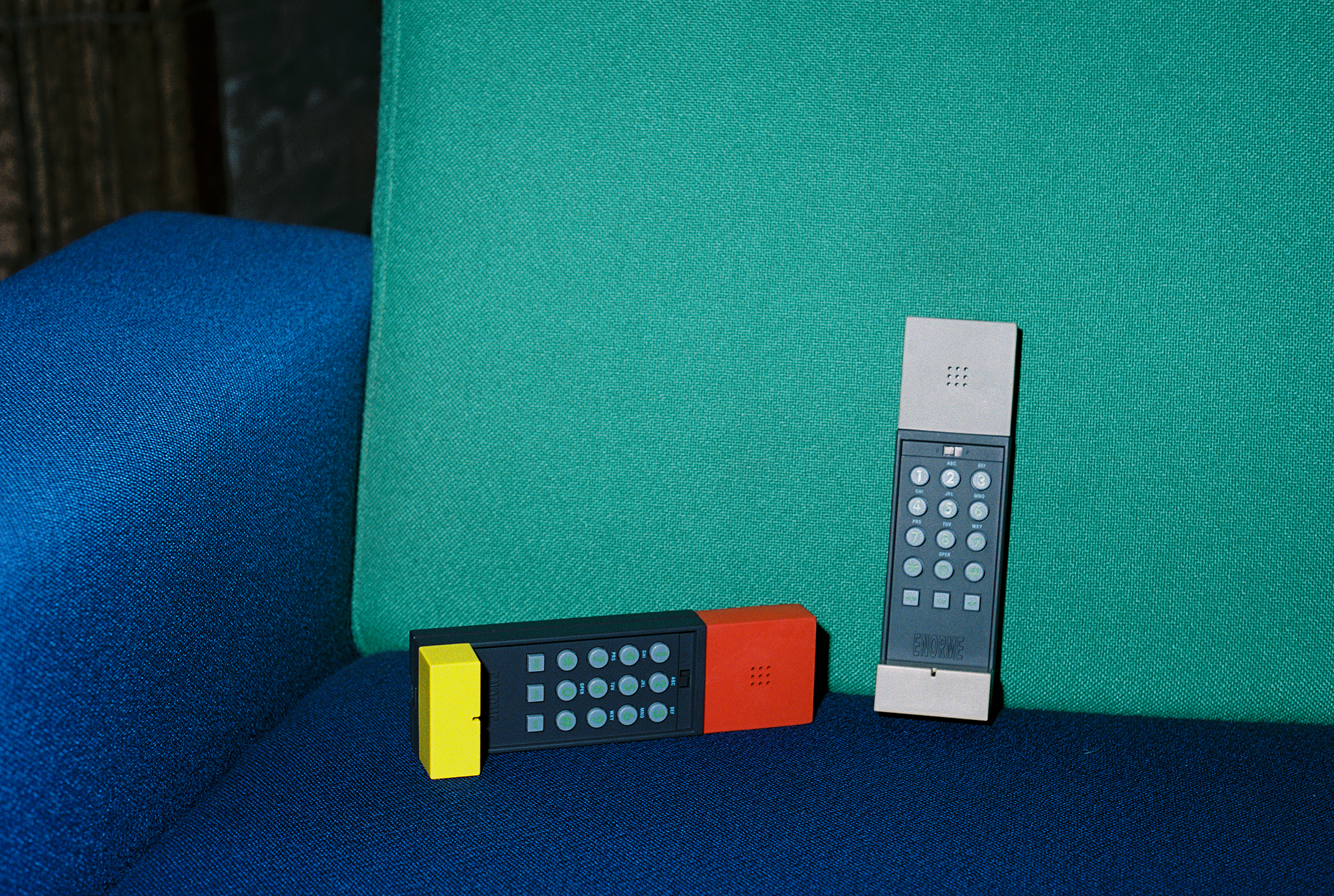 Basic.Space launches its first IRL shopping event – in an empty West Hollywood mall
Basic.Space launches its first IRL shopping event – in an empty West Hollywood mallWith the launch of its first in-person event in LA this weekend, the e-commerce platform is looking to bring collectible design to a whole new audience
-
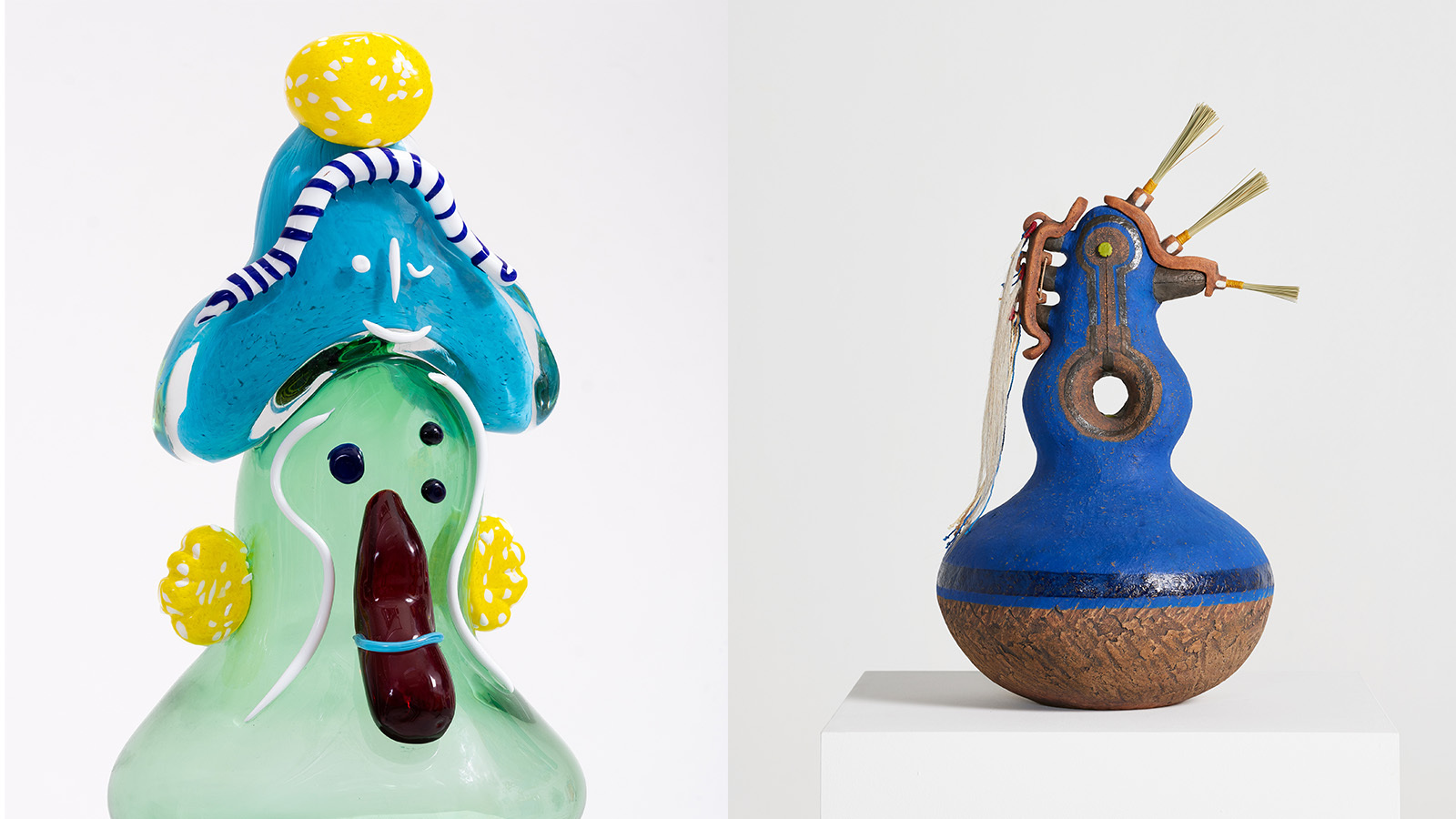 Design Miami 2024 is alive with possibility: here are 14 things to see
Design Miami 2024 is alive with possibility: here are 14 things to seeDesign Miami 2024 opens 4-8 December – let Wallpaper* guide you to the highlights, from dazzling installations to plump sofas and anthropomorphic sculptures
-
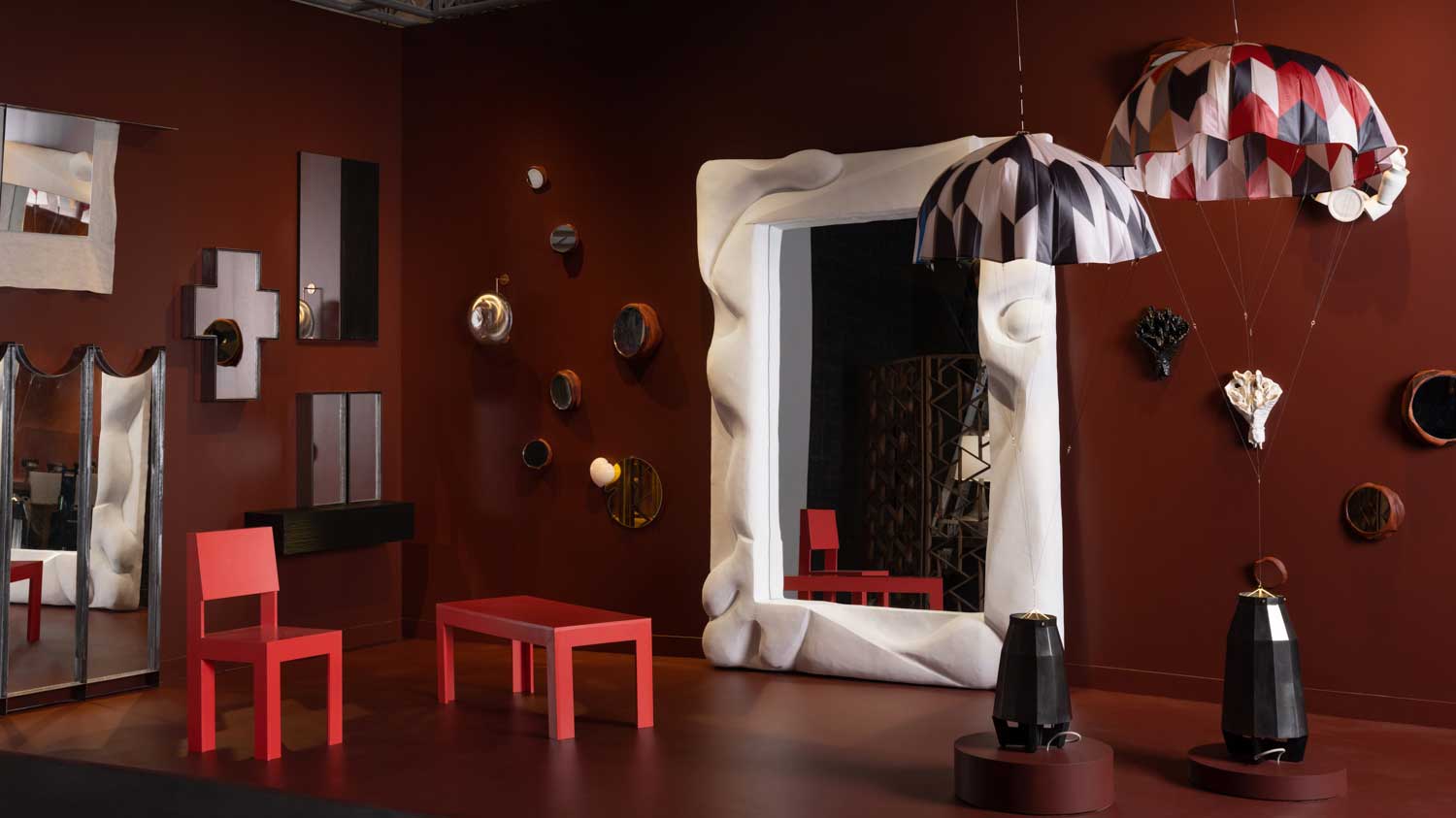 Design Miami 2022: highlights from the fair and around town
Design Miami 2022: highlights from the fair and around townDesign Miami 2022 (30 November – 4 December) aims at ‘rebooting the roots of our relationship with nature and collective structures, ecospheres, and urban contexts’
-
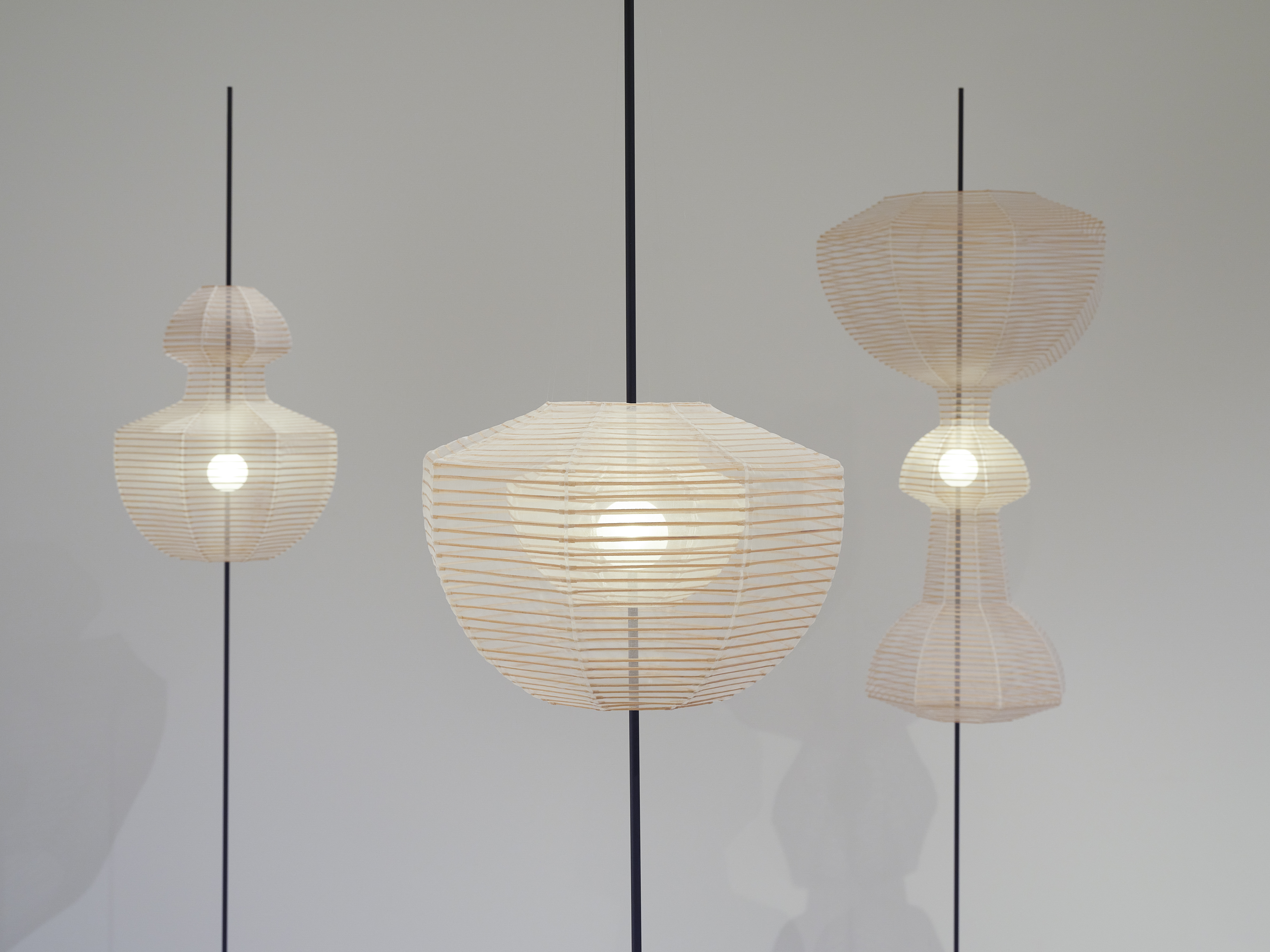 Nendo’s collaborations with Kyoto artisans go on view in New York
Nendo’s collaborations with Kyoto artisans go on view in New York‘Nendo sees Kyoto’ is on view at Friedman Benda (until 15 October 2022), showcasing the design studio's collaboration with six artisans specialised in ancient Japanese crafts
-
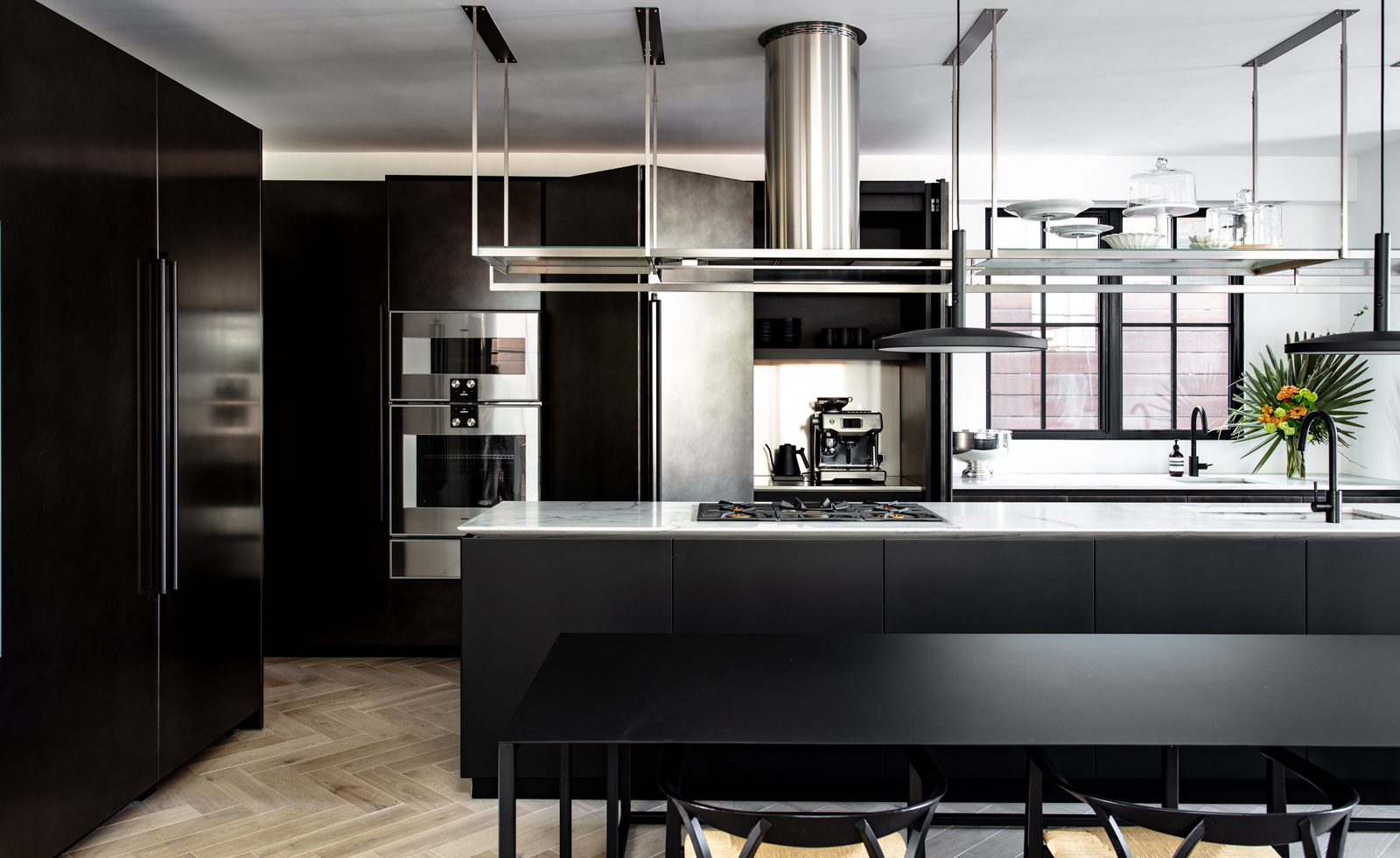 Italian craftsmanship comes to Los Angeles in this eclectic Venice Canals apartment
Italian craftsmanship comes to Los Angeles in this eclectic Venice Canals apartmentBoffi Los Angeles celebrates a juxtaposition of texture throughout a waterside bolthole
-
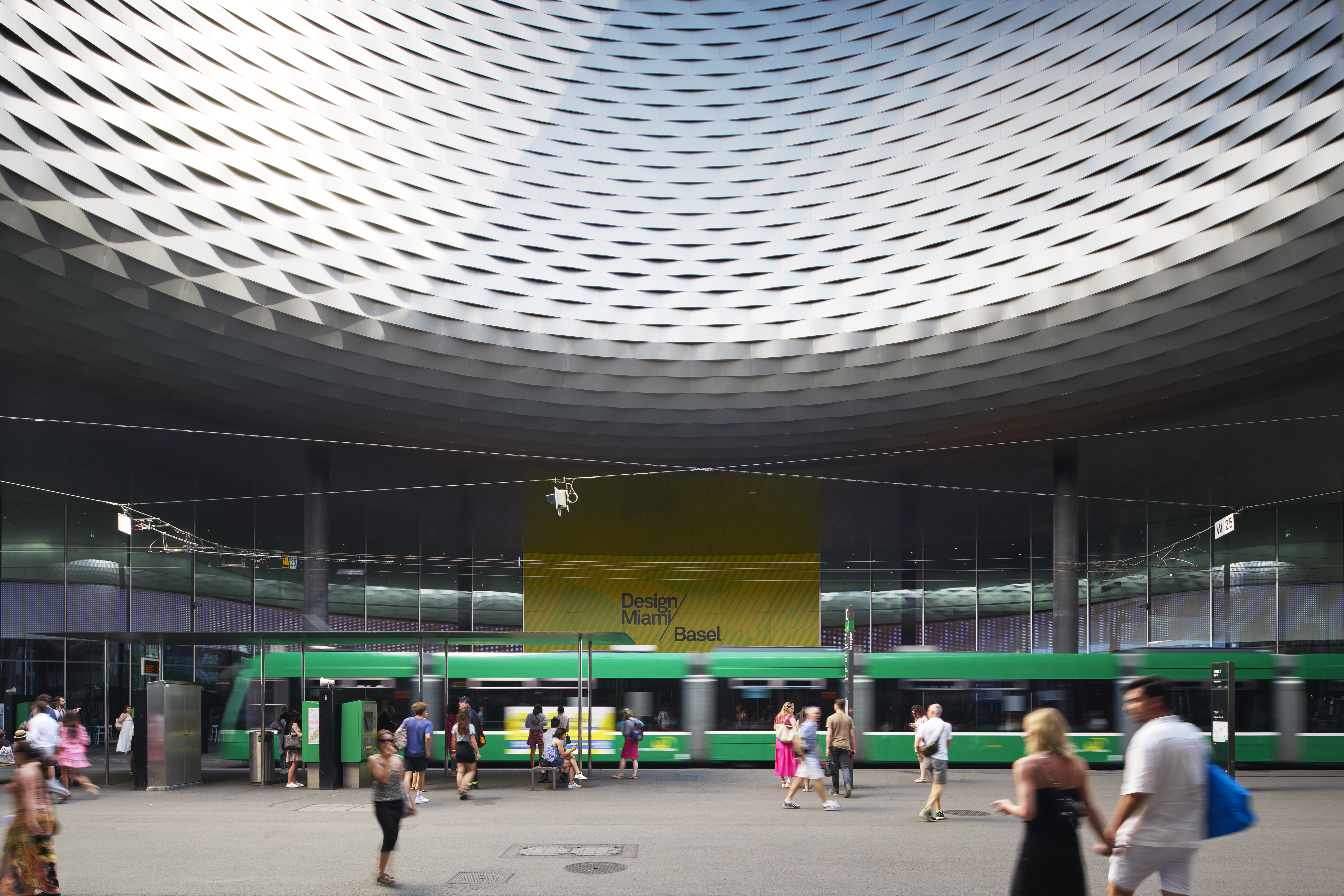 Design Miami/Basel 2022 explores the Golden Age
Design Miami/Basel 2022 explores the Golden AgeDesign Miami/Basel 2022, led by curatorial director Maria Cristina Didero, offers a positive spin after the unprecedented times of the pandemic, and looks at the history and spirit of design
-
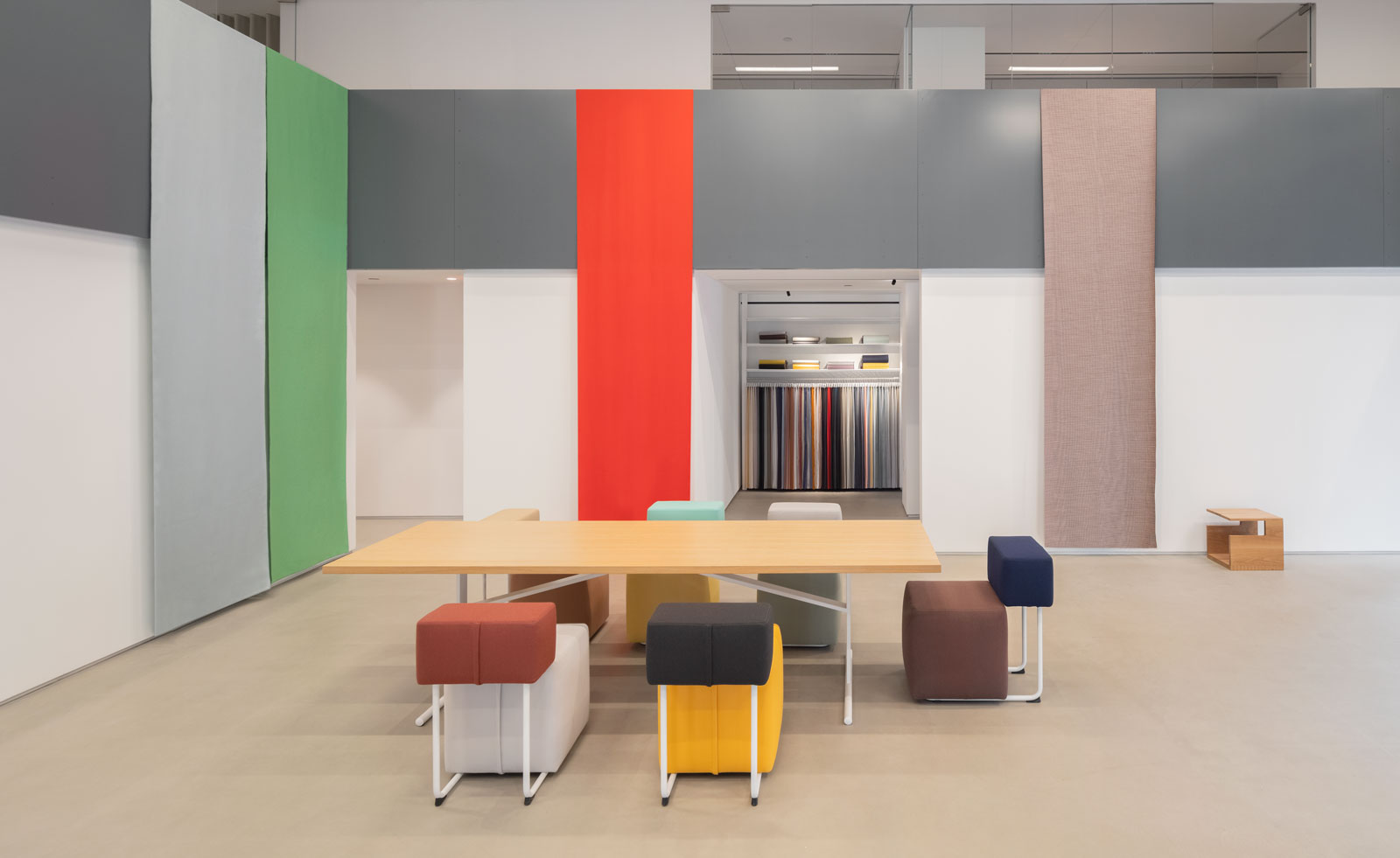 Kvadrat’s flagship New York showrooms encompass colourful design codes
Kvadrat’s flagship New York showrooms encompass colourful design codesIndustrial designer Jonathan Olivares and architect Vincent Van Duysen have worked with Danish textile brand Kvadrat on the vast new space, also featuring furniture by Moroso